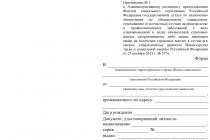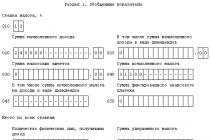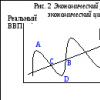1. An investment tax credit is such a change in the tax payment deadline, in which an organization, if there are grounds specified in Article 67 of this Code, is given the opportunity within certain period and in certain limits reduce their tax payments with subsequent gradual payment of the loan amount and accrued interest.
An investment tax credit can be granted for corporate income tax, as well as for regional and local taxes.
(see text in previous edition)
(see text in previous edition)
An investment tax credit can be granted for a period of one to five years.
An investment tax credit may be granted for a period of up to ten years on the grounds specified in subparagraph 6 of paragraph 1 of Article 67 of this Code.
2. An organization that has received an investment tax credit shall have the right to reduce its respective tax payments during the term of the investment tax credit agreement.
(see text in previous edition)
The reduction is made for each payment of the relevant tax for which an investment tax credit is granted, for each reporting period until the amount unpaid by the organization as a result of all such reductions (the accumulated amount of the loan) becomes equal to the amount of the loan stipulated by the relevant agreement. The specific procedure for reducing tax payments is determined by the concluded agreement on investment tax credit.
(see text in previous edition)
If an organization has entered into more than one investment tax credit agreement that has not expired by the time of the next tax payment, the accumulated credit amount is determined separately for each of these agreements. At the same time, the increase in the accumulated loan amount is made first in relation to the first contract in terms of the term of the conclusion of the contract, and when this accumulated loan amount reaches the amount provided for specified contract, the organization may increase the accumulated loan amount under the following agreement.
3. In each reporting period (irrespective of the number of investment tax credit agreements), the amounts by which tax payments are reduced cannot exceed 50 percent of the corresponding tax payments determined by general rules without taking into account the existence of agreements on investment tax credit. At the same time, the amount of credit accumulated during the tax period cannot exceed 50 percent of the amount of tax payable by the organization for this tax period. If the accumulated loan amount exceeds limit dimensions for which the tax reduction established by this paragraph is allowed for such a reporting period, then the difference between this amount and the maximum allowable amount is transferred to the next reporting period. The provisions of this paragraph shall apply, unless otherwise provided by the investment tax credit agreement concluded on the grounds specified in
Tax Code of the Russian Federation Article 67. Procedure and conditions for granting an investment tax credit
1. An investment tax credit may be granted to an organization that is a taxpayer of the relevant tax, if at least one of the following grounds exists:
1) carrying out research or development work by this organization, or technical re-equipment own production, including those aimed at creating jobs for the disabled and (or) improving the energy efficiency of the production of goods, performance of work, provision of services, or the implementation of measures or measures to reduce the negative impact on the environment, provided for in paragraph 4 of Article 17 of the Federal Law No. January 10, 2002 N 7-FZ "On Environmental Protection";
2) implementation by this organization of innovative or innovation activities, including the creation of new or improvement of applied technologies, the creation of new types of raw materials or materials;
3) fulfillment by this organization of a particularly important order for the socio-economic development of the region or the provision by it of especially important services to the population;
4) fulfillment by the organization of the state defense order;
5) investment by this organization in the creation of facilities with the highest energy efficiency class, including apartment buildings, and (or) related to renewable energy sources, and (or) related to objects for the production of thermal energy, electric energy, with an efficiency of more than 57 percent, and (or) other objects, technologies with high energy efficiency, in in accordance with the list approved by the Government Russian Federation;
6) inclusion of this organization in the register of residents of the territorial development zone in accordance with the Federal Law
2. Investment tax credit is granted:
1) on the grounds specified in subparagraphs 1 and 5 of paragraph 1 this article, - for the amount of the loan, which is 100 percent of the cost of the equipment acquired by the interested organization, used exclusively for the purposes listed in these subparagraphs;
(see text in previous edition)
2) on the grounds specified in subparagraphs 2 - 4 of paragraph 1 of this article - for the loan amounts determined by agreement between the authorized body and the organization concerned;
(see text in previous edition)
3) on the grounds specified in subparagraph 6 of paragraph 1 of this article - for the amount of the loan, which is not more than 100 percent of the amount of expenses for capital investments in the acquisition, creation, additional equipment, reconstruction, modernization, technical re-equipment of depreciable property intended and used for the implementation by residents of territorial development zones investment projects in accordance with the Federal Law "On Territorial Development Zones in the Russian Federation and on Amendments to Certain legislative acts Russian Federation".
3. The grounds for obtaining an investment tax credit must be documented by the organization concerned.
4. An investment tax credit is provided on the basis of an application from an organization and is formalized by an agreement prescribed form between the relevant authorized body and this organization. In this application, the organization assumes an obligation to pay interest accrued on the amount of debt in accordance with this chapter.
(see text in previous edition)
The form of an investment tax credit agreement is established by the authorized body that makes a decision on granting an investment tax credit.
(see text in previous edition)
(see text in previous edition)
5. The decision to grant an investment tax credit to an organization is made by the authorized body in agreement with the financial authorities in accordance with Article 63 of this Code within 30 days from the date of receipt of the application. The fact that an organization has one or more agreements on investment tax credit cannot serve as an obstacle to concluding another agreement on investment tax credit with this organization on other grounds.
(see text in previous edition)
In the absence of the circumstances specified in paragraph 1 of Article 62 of this Code, the authorized body is not entitled to refuse interested person in the provision of an investment tax credit on the grounds specified in subparagraph 6 of paragraph 1 of this article, within the amount of this person's expenses for capital investments in the acquisition, creation, additional equipment, reconstruction, modernization, technical re-equipment of depreciable property intended and used for the implementation by residents of zones of the territorial development of investment projects in accordance with the Federal Law "On Territorial Development Zones in the Russian Federation and on Amendments to Certain Legislative Acts of the Russian Federation", for the period specified in the application of the interested person, subject to the restrictions established by Article 66 of this Code.
6. An agreement on an investment tax credit should provide for the procedure for reducing payments for the relevant tax, the amount of the loan (indicating the tax for which the organization was granted an investment tax credit), the term of the agreement, interest accrued on the loan amount, the procedure for repaying the loan amount on time, not exceeding the period for which, in accordance with the agreement, an investment tax credit is granted, the procedure and maturity of accrued interest, an indication of the method of securing obligations, the responsibility of the parties. If an investment tax credit is granted on the security of property, an agreement on the pledge of property is concluded in the manner prescribed by
O.Z. Zakariev,
Head of Department general audit LLC "Audit firm "OSBI-M", expert of the Audit Chamber of Russia, Ph.D.
1. Grounds for granting an investment tax credit
An investment tax credit is an independent type of targeted tax credit, associated exclusively with stimulating the investment and innovation activities of organizations. The concept, procedure and conditions for granting an investment tax credit are regulated by Art. 66 and 67 tax code Russian Federation (TC RF), where it is defined as a change in the tax payment deadline, in which the organization is given the opportunity, within a certain period and within certain limits, to reduce, if there are appropriate grounds, their tax payments, followed by a phased payment of the loan amount and accrued interest.
The list of grounds for granting an investment tax credit differs to a large extent from the grounds provided for by the Tax Code of the Russian Federation for granting a deferment, installment plan or tax credit. An investment tax credit may be granted to a taxpaying organization on the following grounds:
Carrying out by the organization of research or development work (R&D) or technical re-equipment of its own production, including those aimed at creating jobs for the disabled or protecting the environment from industrial waste pollution. On this basis, a loan is granted in the amount of 30% of the cost of the equipment purchased by the interested organization, used exclusively for the listed purposes;
Implementation by the organization of implementation or innovation activities, including the creation of new or improvement of applied technologies, the creation of new types of raw materials or materials;
Fulfillment by the organization of a particularly important order for the socio-economic development of the region or the provision by it of especially important services to the population. In the last two cases, the loan amount is determined by agreement between the interested party and the authorized body.
According to paragraph 3 of Art. 67 of the Tax Code of the Russian Federation, the grounds for obtaining an investment tax credit must be documented by the organization concerned. For example, an organization conducting research and development or technical re-equipment of its own production, the creation of new or improvement of applied technologies, the use of new types of raw materials or materials must be confirmed by documents on the purchase of equipment necessary to perform these types of work.
Unlike other forms of changing the tax payment deadline, an investment tax credit can only be granted for one of the federal taxes- tax on profit (income) of the organization.
With regard to regional and local taxes, there are no restrictions and an investment tax credit can be granted on any of them. It should also be noted that the legislative bodies of state power of the constituent entities of the Russian Federation and representative bodies local government granted the right to expand the list of grounds on which an agreement on an investment tax credit can be concluded in terms of regional and local taxes (clause 7, article 67 of the Tax Code of the Russian Federation).
Another important feature of the investment tax credit is the mandatory accrual of interest on the loan amount, regardless of the basis for which it was granted. Interest on the loan amount is set at a rate of at least one-half, but not more than three-fourths of the refinancing rate of the Bank of Russia.
2. Registration of an investment tax credit
An investment tax credit is formalized by an agreement of the established form between the relevant authorized body and the organization concerned after a decision has been made to grant it. The term for making a decision is one month from the date of receipt of the application.
The investment tax credit agreement must provide for the following conditions:
The procedure for reducing tax payments;
The amount of the loan, indicating the tax on which it is granted;
Contract time;
Interest accrued on the loan amount (in the range from one second to three fourths of the refinancing rate of the Bank of Russia);
The procedure for repayment of the loan amount and accrued interest;
Conditions for the sale by the interested organization during the term of the contract or transfer by it into possession, use or disposal of equipment or other property, the acquisition of which by the organization was a condition for granting a loan, or a prohibition on such sale or transfer;
Information about the documents for the property that is the subject of pledge, or about the surety;
Responsibility of the parties.
Other grounds and conditions for granting an investment tax credit may be established by the laws of the constituent entities of the Russian Federation and the regulations of the representative bodies of local self-government, respectively, for regional and local taxes.
3. Amount of investment tax credit
The total amount of reductions in tax payments made during the term of the investment tax credit agreement must not exceed the amount of the loan. If there are two or more such agreements and their validity has not expired by the time of the next tax payment, the ratio of the amount of reductions and the amount of the loan is determined separately for each of the agreements.
At the same time, the increase in the accumulated loan amount is made first in relation to the first contract in terms of the term of conclusion, and when this accumulated loan amount reaches the amount provided for by the specified agreement, the taxpayer may increase the accumulated loan amount under the next agreement.
Regardless of the number of agreements, the amounts of reductions in tax payments in each reporting period cannot exceed 50% of the corresponding payments determined without taking into account the existence of investment tax credit agreements. At the same time, the amount of reductions accumulated during the tax period cannot exceed 50% of the amount of tax payable by the organization for this tax period.
A situation may arise in which the organization has losses based on the results of individual reporting periods during the tax period or on the basis of the results of the entire tax period. In this case, the amount of reductions in the tax period may exceed the established limits. This surplus is carried over to the next tax period and is recognized as the accumulated loan amount in the first reporting period of the new tax period.
4. Grounds and consequences of termination of the amended tax payment deadline
The law provides for the following grounds for terminating the amended tax payment deadline:
Expiration of a deferral, installment plan, tax credit or investment tax credit;
Early fulfillment by the obligated person of tax obligations in full;
The decision of the authorized body on the early termination of the deferment or installment plan;
Agreement of the parties on the early termination of the tax credit agreement or the investment tax credit agreement;
Court decision to terminate the tax credit agreement or the investment tax credit agreement.
The effect of a deferral, installment plan, tax credit or investment tax credit is terminated early if the taxpayer pays the entire amount of tax and duty due and the corresponding interest before the expiration of the established period.
The basis for the decision of the authorized body on the early termination of the deferment (installment plan) can only be a violation by the person concerned of the conditions for its provision. Such a violation may be expressed in non-observance of the terms and procedure for paying the amount of debt and interest, violation by the interested person of the terms of the pledge agreement, if he himself is the pledgor. The decision to terminate the deferment (installment plan) may be appealed in accordance with Art. 137-142 of the Tax Code of the Russian Federation.
The consequences of the early termination of the deferment (installment plan) on this basis are provided for in paragraph 4 of Art. 68 of the Tax Code of the Russian Federation. The obligated person, within 30 days after receiving the decision to terminate the deferment (installment plan), must pay:
The unpaid amount of debt, which is defined as the difference between the amount of debt fixed in the decision to grant a deferral (installment plan), increased by the amount of interest calculated in accordance with this decision for the period of the deferment (installment plan), and the amounts and interest actually paid during this period , as well as
Penalty for each day from the day following the day of receipt of this decision, up to the day of payment of the outstanding amount of the debt, inclusive.
When calculating interest, the period of validity of a deferral (installment plan) is understood to mean the period from the day the decision on deferment (installment plan) comes into effect until the day the obligated person receives a decision to terminate it.
In Art. 68 of the Tax Code of the Russian Federation does not indicate the grounds and consequences of early termination of the investment tax credit agreement in court. Based on paragraph 1 of Art. 11 of the Tax Code of the Russian Federation, taxpayers should be guided by Art. 450 Civil Code of the Russian Federation (the Civil Code of the Russian Federation), which determines the grounds for termination of the contract. Such a basis as a material breach of the contract by the person concerned is applicable to the case under consideration.
According to paragraph 2 of Art. 450 of the Civil Code of the Russian Federation, a violation of the contract by one of the parties is recognized as essential, which entails such damage for the other party that it is largely deprived of what it was entitled to count on when concluding the contract. Since, when concluding an investment tax credit agreement, the authorized body expects that the tax amounts and interest will be paid within the time period established by the agreement, a significant deviation from the procedure for repaying debt and interest provided for by the agreement is considered a material violation.
The investment tax credit agreement must provide for liability for its violation. The consequences of the two most significant types of violations of this agreement are directly provided for in paragraphs 8 and 9 of Art. 68 of the Tax Code of the Russian Federation. One of them is a violation by the organization concerned stipulated by the agreement conditions for the sale or transfer to possession, use or disposal of equipment or other property to other persons, the acquisition of which was the basis for granting a loan (clause 8, article 68 of the Tax Code of the Russian Federation).
In this case, the interested organization, within 30 days from the date of entry into force of the court decision on termination of the contract (this day is the day of termination of the contract), is obliged to pay:
All unpaid amounts of tax in accordance with the agreement, as well as
Interest on each of the unpaid tax amounts accrued on each day of the validity of the agreement in respect of such tax amount based on the refinancing rate of the Bank of Russia in force during this period, as well as
Penalty at the rate determined in accordance with Art. 75 of the Tax Code of the Russian Federation, for each of the unpaid amounts of tax accrued on each day of the validity of the agreement in relation to such an amount of tax.
The amount of these three components is fixed on the day of termination of the contract, and no interest is charged on it within 30 days. If the total amount of the debt is not paid within this period, the accrual of interest on this amount is made in in the usual way from the date of termination of the contract.
Other consequences occur if an organization that has received an investment tax credit in accordance with subparagraph 3 of paragraph 1 of Art. 67 of the Tax Code of the Russian Federation, violates its obligations to fulfill a particularly important order or services.
In this case, no later than three months from the date of termination of the agreement, this organization is obliged to pay the entire amount of unpaid tax and interest on this amount for each day of the agreement, based on a rate equal to the refinancing rate of the Bank of Russia.
5. Accounting and taxation of the investment tax credit
We will consider the features of accounting and taxation of an investment tax credit granted in connection with the technical re-equipment of an organization using the following example.
Example.
Since April 1, 2005, the organization has been granted an investment tax credit for income tax for a period of two years in the amount of 600,000 rubles. Interest rate established for the loan during the first year - 6.5% (1/2 of the refinancing rate of the Bank of Russia). The amount of the advance payment calculated for payment at the end of the first quarter of 2005 is 44,700 rubles, at the end of half a year - 87,850 rubles, at the end of 9 months - 131,550 rubles.
The example is considered on the basis of the procedure for filling out the income tax return for 2005.
The amount of the monthly advance payment payable by the organization in the II quarter of the current tax period is taken equal to one third of the amount of the advance payment calculated for the first reporting period current year, in the situation under consideration - 14,900 rubles. (44,700 rubles: 3). This amount, calculated in accordance with the rules established by the tax legislation, could be reduced by the organization every month by 50%. Thus, in April - June 2005, the organization reduced income tax payments in the amount of 22,350 rubles. (14,900 rubles x 50% x 3).
At the end of the first half of the year, the amount of the advance payment for income tax calculated for payment amounted to 87,850 rubles. and was reflected in line 250 of the income tax declaration, and taking into account the advance payment for the 1st quarter of 2005, it amounted to 43,150 rubles. (87,850 rubles - 44,700 rubles).
In line 290 of the income tax declaration, the amounts of accrued advance payments for the reporting period were indicated, which for organizations that paid monthly advance payments were amounts due for payment according to declarations for the previous reporting period of this tax period, and the amounts of monthly advance payments, due for payment before the 28th day of each month during the reporting quarter. In the situation under consideration, the amount of 89,400 rubles was given on this line. (44,700 rubles + 14,900 rubles x 3).
At the same time, according to the results of the half year, line 380 reflected the amount of tax to be reduced, determined by calculation, equal to 1,550 rubles. (89,400 rubles - 87,850 rubles).
The above amount, which was income tax, was, according to item 11 , 14, 17 Regulations on accounting"Accounting for income tax settlements" RAS 18/02 approved by order of the Ministry of Finance of Russia dated November 19, 2002 N 114n , the deductible temporary difference that formed the deferred tax asset, reflected in the debit of account 09 "Deferred tax assets" and the credit of account 68 "Calculations on taxes and fees".
Article 66 of the Tax Code of the Russian Federation it was established that if the accumulated amount of the loan exceeds the maximum amount by which tax reduction is allowed for such a reporting period, then the difference between this amount and the maximum allowable amount is transferred to the next reporting period. In the situation under consideration, according to the results of the six months, the accumulated loan amount was 22,350 rubles, and the maximum allowable amount was 21,575 rubles. (43,150 rubles x 50%). Therefore, the difference between the above amounts is 775 rubles. (22,350 rubles - 21,575 rubles) was to be carried over to the next reporting period - nine months of 2005.
The amount of the monthly advance payment payable in the 3rd quarter of the current tax period is assumed to be equal to one third of the difference between the amount of the advance payment calculated based on the results of the half year and the amount of the advance payment calculated based on the results of the 1st quarter ( paragraph 2 of Art. 286 Tax Code of the Russian Federation ), and in the situation under consideration was equal to 14,383.33 rubles. (43,150 rubles: 3).
In connection with the provision of an investment tax credit, as well as taking into account the amount of tax to be reduced in July 2005, the organization was entitled to reduce advance payment for income tax in the amount of 7191.67 rubles. [(14,383.33 rubles - 1550 rubles) x 50% - 775 rubles. + 1550 rubles], in August and September - in the amount of 7191.67 rubles. (14,383.33 rubles x 50%).
In the income tax return for nine months, line 370 reflected the amount of tax payable equal to 550 rubles. (131,550 rubles - 87,850 rubles - 14,383.33 rubles x 3). In connection with the provision of an investment tax credit, the organization should have paid an additional amount of an advance tax payment equal to 275 rubles to the budget following the results of nine months. (550 rubles x 50%), while the amount of accumulated credit did not exceed the maximum allowable value.
Entities should be aware that the amount of the investment tax credit granted for income tax is recognized as a taxable temporary difference, leading to the formation of a deferred tax liability, equal to the amount of accumulated investment loan. Monthly, when a certain amount of credit is accumulated during the term of the agreement on its provision, an entry is made on the credit of account 77 "Deferred tax liabilities" in correspondence with account 68 (clause 15 PBU 18/02; letter of the Ministry of Finance of Russia dated November 24, 2003 N 16-00 -14/354).
In accounting, interest for the use of borrowed funds is reflected as part of other operating expenses (clause 11 of the Accounting Regulation "Organization's expenses" PBU 10/99, approved by order of the Ministry of Finance of Russia dated 05/06/1999 N 33n), for which account 91 is intended " Other income and expenses". The inclusion of loan costs in current expenses is carried out in the amount of payments due in accordance with the agreements concluded by the organization, regardless of the form and when these payments are actually made (clause 14 of the Accounting Regulation "Accounting for loans and credits and the costs of servicing them" PBU 15 /01, approved by order of the Ministry of Finance of Russia dated 02.08.2001 N 60n).
According to subparagraph 2 of paragraph 1 of Art. 265 of the Tax Code of the Russian Federation, expenses in the form of interest on debt obligations of any kind for profit tax purposes are included in non-operating expenses. Article 69 Budget Code In the Russian Federation, the granting of tax deferrals to taxpayers is regarded as the granting of budget credits. Wherein tax authorities are of the opinion that interest paid for deferral, installment, provision of tax and investment tax credits are not taken into account for income tax purposes, since non-operating expenses include interest on debt obligations in part civil contracts credit and loan (letter of the Federal Tax Service of Russia dated 02.02.2005 N 02-1-07/2). The conclusion of the tax authorities is confirmed in judicial practice(See, for example, Resolution of the Presidium of the Supreme Arbitration Court of the Russian Federation dated November 16, 2004 N 5665/04).
Interest expense that generates accounting profit but is not included in the determination tax base for income tax, in accordance with clause 4 of PBU 18/02, they are recognized as a constant difference.
emergence constant difference leads to the formation of a permanent tax liability, which is the amount of tax that increases tax payments for income tax in the reporting period (clause 7 PBU 18/02).
The following entries were made in the accounting records of the organization:
- Accounts(monthly no later than April 28, 2005, May 28, 2005, June 28, 2005):
Dt 68 Kt 51 "Settlement accounts" - 7450 rubles. (14,900 rubles x 50%) - reflected the payment of a monthly advance payment of income tax, taking into account the provided investment tax credit;
Dt 68 Kt 77 - 7450 rubles. (14,900 rubles x 50%) - the amount of the accumulated investment loan is reflected as a deferred tax liability.
- Accounts 04/30/2005:
Dt 91 Kt 68 - 3.98 rubles. (7450 rubles x 6.5%: 365 x 3) - reflected the accrual of interest for the provided investment tax credit;
Dt 99 "Profit and Loss" Kt 68 - 0.96 rub. (3.98 rubles x 24%) - reflects the emergence of a permanent tax liability.
- Accounts 05/31/2005:
Dt 91 Kt 68 - 46.43 rubles. (7450 rubles x 6.5%: 365 x 31 + 7450 rubles x 6.5%: 365 x 4) - the accrual of interest for the provided investment tax credit is reflected;
Dt 99 Kt 68 - 11.14 rubles. (46.43 rubles x 24%) - reflects the emergence of a permanent tax liability.
- Accounts 06/30/2005:
Dt 91 Kt 68 - 83.58 rubles. (7450 rubles x 2 x 6.5%: 365 x 30 + 7450 rubles x 6.5%: 365 x 3) - the accrual of interest for the provided investment tax credit is reflected;
Dt 99 Kt 68 - 20.06 rubles. (83.58 rubles x 24%) - reflected the emergence of a permanent tax liability.
- Accounts made no later than 07/28/2005:
Dt 09 Kt 68 - 1550 rubles. (89,400 rubles - - 87,850 rubles) - a deferred tax asset is reflected in the amount of income tax subject to reduction;
Dt 68 Kt 51 - 7191.66 rubles. (RUB 14,383.33 - RUB 7,191.67) - reflected the payment of the monthly advance payment of income tax, taking into account the investment tax credit granted and the amount of tax to be reduced;
Dt 68 Kt 77 - 5641.67 rubles. [(14,383.33 rubles - 1550 rubles) x 50% - 775 rubles] - the amount of the accumulated investment tax credit is reflected as a deferred tax liability;
Dt 68 Kt 09 - 1550 rubles. - reflected the repayment of a deferred tax asset.
- Accounts 07/31/2005:
Dt 91 Kt 68 - 127.40 rubles. (7450 rubles x 3 x 6.5%: 365 x 31 + 5641.67 rubles x 6.5%: 365 x 4) - the accrual of interest for the provided investment tax credit is reflected;
Dt 99 Kt 68 - 30.58 rubles. (127.40 rubles x 24%) - reflects the emergence of a permanent tax liability.
- Accounts (monthly no later than 08/30/2005, 09/28/2005):
Dt 68 Kt 51 - 7191.67 rubles. (14,383.33 rubles x 50%) - reflects the payment of a monthly advance payment of income tax, taking into account the provided investment tax credit;
Dt 68 Kt 77 - 7191.67 rubles. (14,383.33 rubles x 50%) - the amount of the accumulated investment tax credit is reflected as a deferred tax liability.
- Accounts 08/31/2005:
Dt 91 Kt 68 - 159.65 rubles. (7450 rubles x 3 x 6.5%: 365 x 31 + 5641.67 rubles x 6.5%: 365 x 31 + 7191.67 rubles x 6.5%: 365 x 4) - interest accrual is reflected for the provided investment tax credit;
Dt 99 Kt 68 - 38.32 rubles. (159.65 rubles x 24%) - reflects the emergence of a permanent tax liability.
- Accounts 09/30/2005:
Dt 91 Kt 68 - 191.81 rubles. (7450 rubles x 3 x 6.5%: 365 x 30 + 5641.67 rubles x 6.5%: 365 x 30 + 7191.67 rubles x 6.5%: 365 x 30 + 7191.67 rubles x 6.5%: 365 x 3) - reflects the accrual of interest for the provided investment tax credit;
Dt 99 Kt 68
- 46.03 rubles. (191.81 rubles x 24%) - reflected the emergence of a permanent tax liability.
The Tax Code of the Russian Federation singles out a tax credit and an investment tax credit, considering them as forms of changing the deadline for paying taxes and fees (clause 3, article 61). The authorized bodies, whose competence includes making a decision on changing the tax payment deadline, are financial authorities the appropriate level, depending on whether taxes and fees belong to groups of federal, regional or local, as well as customs authorities and authorities off-budget funds.
A tax credit, as well as an investment tax credit, are provided to an interested person upon his application and are drawn up by an agreement with the authorized body. The conclusion of an agreement in this case distinguishes these institutions from other forms of changing the tax payment deadline. However, there are differences between these two forms of tax credit with many similar features.
A tax credit is granted to an interested person for a period of three months to a year, one or
several taxes. The Code does not specify to which person it is granted, therefore, all taxpayers are meant, i.e. organizations and individuals. The grounds for its provision are the presence of at least one of the following circumstances: 1) causing damage to a person as a result of natural disaster, technological disaster or other circumstances force majeure; 2) delay in financing from the budget or payment made by a person state order; 3) the threat of bankruptcy in the event lump sum payment the face of the tax.
The tax credit agreement is concluded within seven days after the adoption of a decision on this issue by the body. The contract must specify: the amount of tax debt, interest accrued on it, the term of the contract, the procedure for repaying debt and interest, documents on property that is the subject of pledge, or a guarantee, as well as the responsibility of the parties. Interest is accrued only when a tax credit is provided in case of a threat of bankruptcy, based on the refinancing rate Central Bank RF, valid for the period of the tax credit agreement.
An investment tax credit can be granted, in contrast to a tax credit, in accordance with the Tax Code of the Russian Federation for a limited range of taxes, namely: income tax, as well as regional and local taxes (Article 66). Such loans are provided to organizations.
An investment tax credit is an opportunity for an organization to reduce its payments within a certain period and within certain limits, followed by a phased payment of the loan amount and accrued interest. It is granted for a period of one to five years. In each reporting period, as well as during the entire tax period, the amount of the loan cannot exceed 50% of the amount of tax payable under the general rules.
The grounds for granting an investment tax credit is the presence of at least one of the following circumstances: 1) the organization conducts research, development work or technical re-equipment of its own production; 2) implementation of implementation or innovation activities; 3) fulfillment by the organization of a particularly important order for the socio-economic development of the region or the provision by it of especially important services to the population.
The decision to grant a loan must be made by the authorized body within one month from the date of receipt of the application. The law establishes limits on interest on the loan amount: they should not be lower than one swarm and higher than three-fourths of the refinancing rate of the Central Bank of the Russian Federation.
The representative bodies of the constituent entities of the Russian Federation and local self-government have the right to establish other conditions for the provision of an investment tax credit, respectively, for local taxes, including the terms of its validity and interest rates on the loan amount.
Questions and tasks for self-control
Define the concept of tax. What are the legal features of a tax?
Define the concept of collection. How is it different from a tax?
What role do taxes play?
Classify taxes on different grounds.
What is understood in Russian legislation under the system of taxes and fees? What payments are united by this concept?
What levels are tax payments divided by legislation? What is included in each of them, what are the common features of payments of the corresponding levels?
What is meant by taxation? How is it different from enforcing taxes? What kind of establishment of taxes and fees is provided for by the legislation, on what norms of the Russian Federation is it based?
Define the concept and subject tax law.
Describe the sources of tax law. Specify the norms of the Constitution of the Russian Federation, fixing the foundations of tax law.
Describe the content of the RF Tax Code.
What is the subject of regulation of regional legislation and acts of local governments? Lead concrete examples.
What are the main elements of taxation of the Tax Code of the Russian Federation.
What is meant by tax incentives?
Define the concept of tax legal relations. Who acts as their subjects?
What are the obligations of taxpayers? What are their rights?
What measures ensure that taxpayers fulfill their obligations?
In what order are unpaid tax payments (arrears), penalties, amounts of sanctions for late payments collected?
What rights do tax authorities have in exercising their functions in the field of taxation?
19. What are the duties and responsibilities of banks in the field of taxation? What types of violations by the bank of its obligations and measures of responsibility for them are provided for by the Tax Code of the Russian Federation? Give the answer on the basis of specific norms of the Tax Code of the Russian Federation. What are the measures of administrative responsibility of bank officials for offenses in the field of taxation? Give your answer with reference to legal norms. How normative act regulated tax credit and investment tax credit?
Define the concept of a tax credit. In what order is a tax credit granted, for how long, what is the basis for its provision?
What is meant by investment tax credit? How is it different from a tax credit and what are the similarities between the two?
What are the grounds for granting an investment tax credit? To whom is it provided? On what period?
Who (which authorities) is entitled to make decisions on granting a tax credit and an investment tax credit?
Define the concept of tax offenses, what are their features, the circle of subjects? Give the answer on the basis of specific norms of the Tax Code of the Russian Federation.
What tax sanctions are applied to taxpayers who violate tax law what are their features?
Name specific tax offenses and applicable tax penalties.
What are the measures of administrative responsibility of officials of organizations for offenses in the field of taxation? Give your answer with reference to legal norms.
Describe the administrative procedure for protecting the rights of taxpayers. Make a complaint against the actions of the tax authority, intended for consideration by the administrative procedure.
Describe court order protecting the rights of taxpayers. Which of them has the right to apply for protection of rights to a court of general jurisdiction and who - to an arbitration court?
Describe the role Constitutional Court RF in protecting the rights and legitimate interests of subjects of tax law. Give specific examples from the activities of the Constitutional Court of the Russian Federation in this area.
What is the role of the Prosecutor's Office of the Russian Federation in protecting the rights of subjects of tax legal relations? Describe it on the basis of the Law of the Russian Federation "On the Prosecutor's Office of the Russian Federation".
Based on certain provisions of the Tax Code of the Russian Federation, an enterprise has the right to reduce taxes. In addition, it is possible to legally issue a change in the timing of tax payment with the obligation to gradually repay the loan on accrued interest. Such an agreement is drawn up within a certain period of time, and it fixes the established amount of tax reduction. This feature is called the investment tax credit. Below we will describe in more detail what the procedure and conditions for obtaining such a benefit are, which every taxpayer will be happy with.
Loan conditions
To obtain this type of loan, at least one of the following conditions must be met:
- The enterprise carries out research, technical, design or socially useful work. For example, it creates conditions for the work of people with disabilities. Works related to ecology, for example, the protection of nature from the harmful effects of industrial waste, fall into the same category.
- Carrying out a complex of scientific, technological, organizational, financial and commercial activities, the purpose of which is the creation of new or improved goods/services.
- The organization participates in raising the socio-economic level of the region or provides goods or services that are especially significant for the population.
Loan amount
An investment loan is issued in the following options:
- 30% of the funds spent on the purchase of equipment. The equipment must be used only for the purposes listed in subparagraph 1 of Art. 66 of the Tax Code of the Russian Federation.
- On the amount of debt, which is determined by the consent of the executive authority and the enterprise involved in the process. Such a debt is issued on the basis of paragraphs. 2 and 3 of the Tax Code of the Russian Federation. After a certain period of time (regardless of the number of loan agreements), the amount of reduction in tax payments should not be more than 50% of the amount of the corresponding tax payments established by public rules, not taking into account existing investment tax loan agreements.
In addition, the amount of debt should not exceed 50% for the entire period of credit accumulation. If the accumulation debt exceeds the established norm, the difference between the established and the resulting value is transferred to another reporting period. However, this is possible only if the tax reduction is an acceptable measure established by this paragraph for a certain period of time.
The amount of debt should not exceed 50% for the entire period of credit accumulation.
An enterprise that has received an investment tax credit may pay taxes in a lower amount on the appropriate tax within the time period established by the loan agreement.
You can reduce any payment for which a loan was issued, for a period of time until the amount that was accumulated during the time the loan was granted is equal to that which was agreed in the agreement. The exact order of reduction can be determined by the agreement on the issuance of an investment loan.
If the company has entered into several loan agreements, the amount of each debt is calculated separately. We also note that the increase in the amount received is made first relative to the initial loan by the term of conclusion, and if the amount of accumulation has reached the limit established in the agreement, then the company has the right to increase the amount under the next agreement.
If the company had an excess of expenses, which resulted in losses during tax periods or financial losses for the entire period, the loan amount is also automatically transferred to the next payment period, and also receives the status of the accumulated amount in the tax interval.
Term
An investment loan can be granted for a limited time - from one year to five years. The term of provision is determined in the negotiation process between the lender and the borrower. Interest on the amount of the debt will be determined at a rate not less than half and not more than three-fourths of the new loan rate for more than favorable conditions for complete or partial repayment previous loan.
The term of provision is determined in the negotiation process between the lender and the borrower.
For clearance investment loan the enterprise must submit an application, after which the process of drawing up an agreement between the executive authority and this enterprise will begin.
Investment agreement
The agreement must include the following items:
- The procedure for reducing the payment of taxes.
- The amount of the loan (this paragraph also takes into account state fee, which will be charged on the debt).
- The order of payment for the debt and the interest received.
- Documents for collateral or surety (obligation for the fulfillment of obligations).
In order for an enterprise to receive an investment loan, it must provide the following set of documents:
- A formal request for a loan by a taxpayer.
- A document that describes the main aspects entrepreneurial activity on the basis of which it is possible to receive investments.
- Information showing the preliminary plan for paying the debt, as well as the timing of its repayment.
- Determination of the tax for which it will be issued tax debt confirmed by the tax authority.
- Report on financial condition enterprises.
- Documents for collateral or responsibility for ensuring the fulfillment of obligations by the taxpayer (guarantee).
- Written confirmation of the absence of debts to the city budget (issued by the tax office).
- Documents serving as the basis for the activities of a legal entity.
For example
A wine distillery in a developing area plans to implement a project to improve and expand production in order to increase productivity. And this means an increase in sales of goods of a higher quality, an increase in the number of products, an expansion of the range. In addition, new equipment will ensure high quality products.
According to experts, the demand for alcoholic products is sufficient to increase sales at the moment. An increase in demand from restaurants and bars for alcoholic products is expected. Coming soon new year holidays, which increases the level of alcohol sales. In addition, small towns, villages and settlements nearby from the region apply for the supply of alcoholic products.
The project is expected to:
- Full or partial replacement of the existing equipment of the enterprise with newer and more productive equipment.
- Organization of the production of a new type of product thanks to the new workshop.
Security financial resources operating costs are expected to be partially at the expense of personal Money from the current work of the organization and partially - a loan in the amount of 14,800 thousand rubles. with payment of 24% per annum in rubles. The duration of the agreement determined by the bank is three years from the date of conclusion of the agreement. The Bank puts forward its claims in the form of debt repayment in equal parts of the amount within twelve months in each tax period.
To provide financial solvency(payment full cost loan at the set time), the organization applies for an investment loan for income tax within a period of three years.














